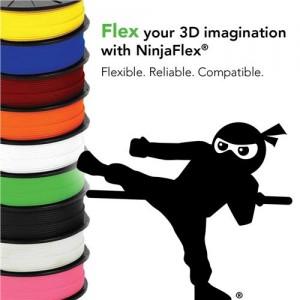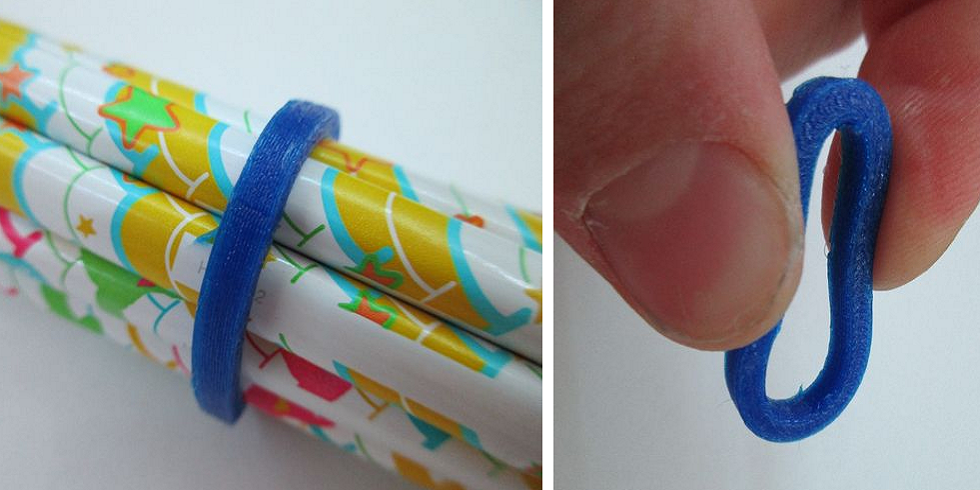File this latest contribution to Instructables on the list of 3D printed objects that were realized not necessarily because there was a specific, critical need but because yet another material was added to the ever expanding store of possibilities where 3D printing is concerned. And, speaking of expanding, that’s precisely what NinjaFlex flexible filament does.
Instructables contributor “icecats”–who also designed a clever, multi-material mini-plunger–discovered the flexible filament and immediately realized how useful it could be in terms of customizing one of the most basic tools of organization: The rubber band.
“Often when working on projects,” explained icecats (we’re going with “IC” for the sake of simplicity), “I am forced to use a close match of a part instead of the right sized part for the job.” However, IC continued, “The beautiful thing about 3D printing is the ability to customize an object to exactly how you need it. With some 3D modeling skills, you can create a part to your desired specs and have it printed before a commercial company could have even received your order.”
Settling for “almost right” wasn’t necessary after IC discovered NinjaFlex flexible filament, so it was on to the drawing board, or at least the digital drawing board via Autodesk Inventor, to create a 3D model of the perfect rubber band, ideal for holding together an otherwise unruly bunch of colorful pencils.
- A 3D printer that is capable of printing using NinjaFlex flexible filament. In this regard, IC remarked, “I printed an add-on [adapter, see Thingiverse for details] for my Printrbot Simple that allowed me to use flexible filament.”
- NinjaFlex flexible filament. Sample packs are available and then you can print rubber bands in a variety of colors!
- 3D modeling software.
- Calipers (you’ll be measuring the things you want to contain with your custom rubber band).
Follow the instructions provided by IC via the Instructables page, including getting started by getting the dimensions of the objects you’re binding together as a whole. This is, of course, the part of the step-by-step instructions that feels like a no-brainer, but it’s best to be thorough so you don’t have to repeat a step much less begin from scratch when you discover your rubber band is too darn small.
One crucial step in the process before you begin 3D modeling: Measure whatever it is you wish to organize/group.
If you aren’t familiar with 3D modeling, this is probably a great project to begin with as it isn’t especially complicated and if you don’t get it right the first time, it’s probably not going to be a big deal (for instance, you might have to take one pencil out of the stack to make them fit in the rubber band that you didn’t get quite as expansive as you should have). Follow IC’s instructions for creating the 3D model or go out on a limb and see if you can figure it out for yourself.
Either way, check out IC’s parameters for printing, which really are very helpful:
- Use the NinjaFlex Filament
- Print at .3 layer height
- Print with 100% infill density
- Go with 30 mm/s speeds
Aside from those parameters, you’ve got a great deal of freedom–or flexibility, more aptly–with this project. Go crazy with the multiple color sample pack of NinjaFlex filament and get organized!
Let us know if this is a project you’ll be trying in the Make Your Own Rubber Bands forum thread over at 3DPB.com.
